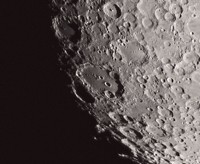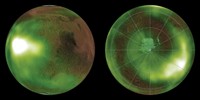Advertisement
Grab your lab coat. Let's get started
Welcome!
Welcome!
Create an account below to get 6 C&EN articles per month, receive newsletters and more - all free.
It seems this is your first time logging in online. Please enter the following information to continue.
As an ACS member you automatically get access to this site. All we need is few more details to create your reading experience.
Not you? Sign in with a different account.
Not you? Sign in with a different account.
ERROR 1
ERROR 1
ERROR 2
ERROR 2
ERROR 2
ERROR 2
ERROR 2
Password and Confirm password must match.
If you have an ACS member number, please enter it here so we can link this account to your membership. (optional)
ERROR 2
ACS values your privacy. By submitting your information, you are gaining access to C&EN and subscribing to our weekly newsletter. We use the information you provide to make your reading experience better, and we will never sell your data to third party members.
Environment
More Ar near Earth's surface
March 13, 2006
| A version of this story appeared in
Volume 84, Issue 11
Testing a 180-year-old theory of chemist John Dalton, researchers have measured a diffusive separation between heavy and light molecules in the near-surface layer of Earth's atmosphere. Ralph F. Keeling and coworkers at Scripps Institution of Oceanography, La Jolla, Calif., found a detectable separation effect through precise measurements of the argon/nitrogen ratio (Science 2006, 311, 1429). On nights in February and April 2005, they took air samples in Borrego Sink, a 2-km depression in a California desert plain 140 meters above sea level that is rimmed by mountains. Ar/N2 ratios were found to be higher near the surface relative to the air aloft and the air back in La Jolla. Dalton proposed that gravity would produce changes in atmospheric composition at different elevations, but subsequent measurements could find no separation below 100 km, where presumably the tendency to separate is overwhelmed by turbulent mixing. The Scripps group believes its observations were attributable to temperature gradients and aided by low winds.





Join the conversation
Contact the reporter
Submit a Letter to the Editor for publication
Engage with us on Twitter